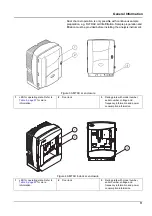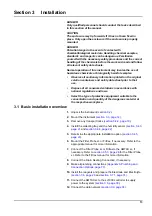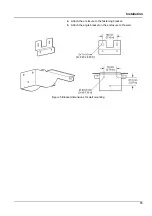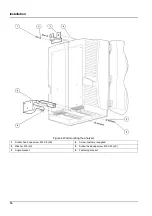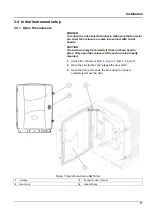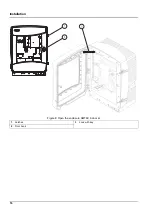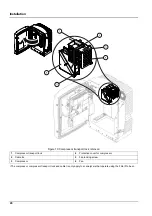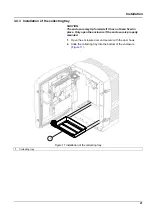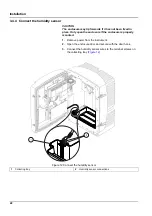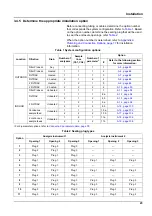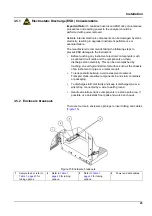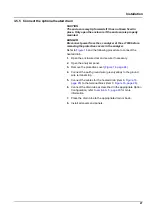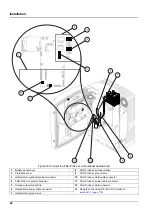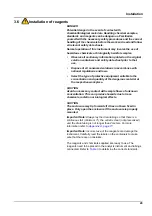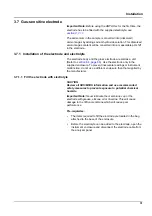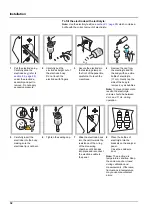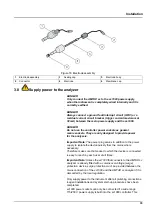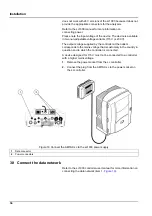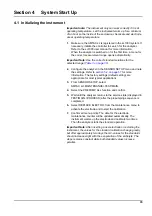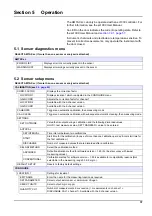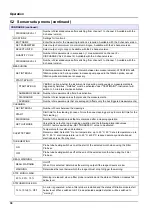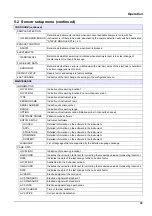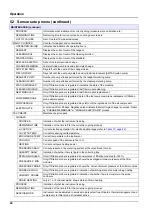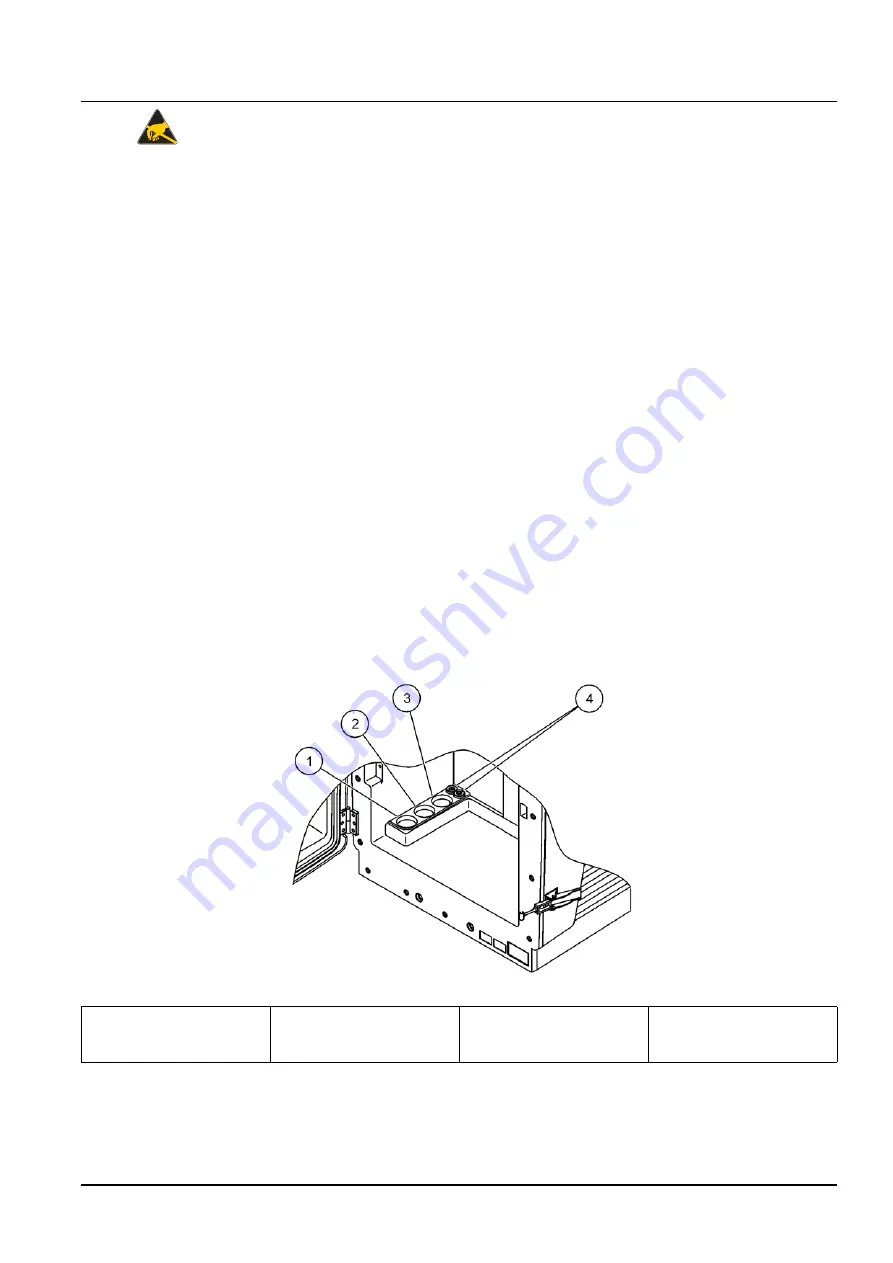
25
Installation
3.5.1
Electrostatic Discharge (ESD) Considerations
Important Note:
To minimize hazards and ESD risks, maintenance
procedures not requiring power to the analyzer should be
performed with power removed.
Delicate internal electronic components can be damaged by static
electricity, resulting in degraded instrument performance or
eventual failure.
The manufacturer recommends taking the following steps to
prevent ESD damage to the instrument:
•
Before touching any instrument electronic components (such
as printed circuit cards and the components on them)
discharge static electricity. This can be accomplished by
touching an earth-grounded metal surface such as the chassis
of an instrument or pipe or a metal conduit.
•
To reduce static build-up, avoid excessive movement.
Transport static-sensitive components in anti-static containers
or packaging.
•
To discharge static electricity and keep it discharged, wear a
wrist strap connected by a wire to earth ground.
•
Handle all static-sensitive components in a static-safe area. If
possible, use anti-static floor pads and work bench pads.
3.5.2 Enclosure breakouts
There are four main enclosure openings to insert tubing and cables
(
Figure 15 Enclosure breakouts
1
Sample feed or refer to
for
tubing options.
2
Refer to
options.
3
Refer to
for tubing
options.
4
Power and data cables
Summary of Contents for AMTAX sc
Page 2: ......
Page 7: ...7 Specifications Figure 1 Instrument dimensions AMTAX sc...
Page 12: ...12 General Information...
Page 36: ...36 System Start Up...
Page 44: ...44 Operation...
Page 56: ...56 Maintenance...
Page 64: ...64 Troubleshooting...
Page 69: ...69 Replacement Parts and Accessorie Figure 23 Analyzer enclosure AMTAX indoor sc...
Page 70: ...70 Replacement Parts and Accessorie Figure 24 Analyzer panel overview...
Page 71: ...71 Replacement Parts and Accessorie Figure 25 Analyzer panel front view details...
Page 72: ...72 Replacement Parts and Accessorie Figure 26 Analyzer panel back view details...
Page 76: ...76 Warranty and liability...

